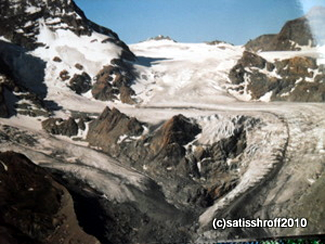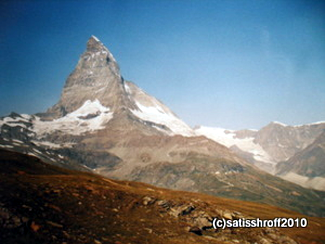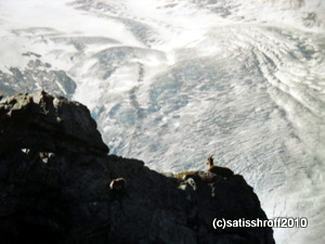Jan 01, 2026
Jan 01, 2026
by Satis Shroff
 As you go along the Riffelberg trail to Riffelalp in Switzerland, you´re following Mark Twain´s footsteps. He describes the trail in his book ´Climbing the Riffelberg.´ Riffelalp has the highest ram in Europe, and when you reach the top you can see a breathtaking panorama of 29 four-thousand-metre peaks, including the Matterhorn. There are a few places in this world which leaves you breathless for you are overwhelmed and awed by the sheer beauty of what you behold. I had the same feeling when I gazed at the Khumbu Himalayas, and beyond the Roof of the World.
As you go along the Riffelberg trail to Riffelalp in Switzerland, you´re following Mark Twain´s footsteps. He describes the trail in his book ´Climbing the Riffelberg.´ Riffelalp has the highest ram in Europe, and when you reach the top you can see a breathtaking panorama of 29 four-thousand-metre peaks, including the Matterhorn. There are a few places in this world which leaves you breathless for you are overwhelmed and awed by the sheer beauty of what you behold. I had the same feeling when I gazed at the Khumbu Himalayas, and beyond the Roof of the World. When you descend to the Riffelsee, a picturesque lake, you cherish the sight of the Matterhorn with its jagged, majestic peak and you see the reflection in the Riffelsee´s turquoise water. Flanking it are 29 other peaks: all four thousand metres above sea level.
When you descend to the Riffelsee, a picturesque lake, you cherish the sight of the Matterhorn with its jagged, majestic peak and you see the reflection in the Riffelsee´s turquoise water. Flanking it are 29 other peaks: all four thousand metres above sea level. You can´t help being fascinated by the pine and larch forests, moraine lakes, alpine vegetation, glacial moraines and the scree gather below. What I love to see are the tarns, glacial lakes that have been left behind when the glacier recedes.
You can´t help being fascinated by the pine and larch forests, moraine lakes, alpine vegetation, glacial moraines and the scree gather below. What I love to see are the tarns, glacial lakes that have been left behind when the glacier recedes. The Matter-Vispa changes its bed for a moment and flows again to the right. It´s swollen now and the water has turned grey with stones becoming rare. More vineyards appear along the slopes to the right. A cement factory appears with rich green meadows.Gott beschütze dieses Haus
Und all die gehen ein und aus.
God protect this house,
And all those who go in and out.
28-May-2011
More by : Satis Shroff

|
hello june and satis i was a very good friend of matthew when i lived in zermatt from 1992 till 1997 i have lost his contact details and would dearly love to get in touch with him again would there be any chance you could let him know or send me any contact details you have my email is justinreakes @hotmail.com thank you |

|
Hi June! Glad you like the article. Oh, I didn't know that Matthew was ill. Nice to hear that he 'has started back at Gornergrat.' A jolly spirit, I must say. The world is small, isn't it? Well, have a good time and Dankeschön again. Regards, Satis Shroff, Freiburg, Deutschland |

|
Great descriptions.We were in Zermatt in June 2012 on our 3rd visit.Met Matthew Fletcher on previous visits but missed him this time.He phoned me today and has just started back at Gornergrat as he usually starts in late June but has been ill. |